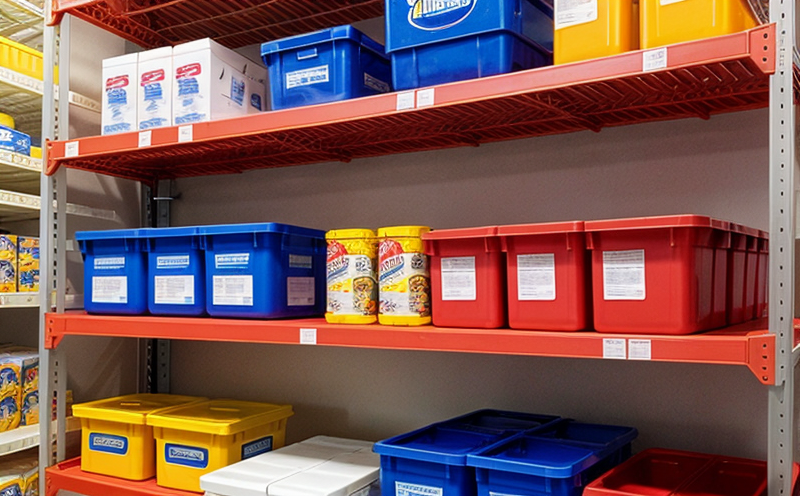ISO 33498 Microbial Challenge Studies in Infant Foods
The ISO 33498 standard outlines a rigorous method for conducting microbial challenge studies specifically designed to evaluate the shelf life and stability of infant foods. This service is critical for manufacturers aiming to ensure product safety, compliance with international standards, and consumer confidence. The process involves inoculating samples of infant food products with various microorganisms under controlled conditions to assess their survival rate and growth potential over time.
The primary objective of these studies is to determine the microbial stability of infant foods by subjecting them to a range of storage conditions that mimic real-world scenarios such as temperature fluctuations during transport, shelf life at home, or variations in handling. By understanding how microorganisms behave under these conditions, manufacturers can optimize packaging, storage instructions, and labeling to extend product shelf life and maintain quality.
The protocol for ISO 33498 is stringent and involves multiple steps that must be meticulously followed by laboratories with specialized expertise. The process begins with selecting appropriate strains of pathogenic microorganisms based on the specific type of infant food being tested. Common pathogens include Escherichia coli, Listeria monocytogenes, and Campylobacter jejuni. These organisms are chosen because they can cause severe health issues in infants due to their sensitivity to environmental factors.
The next step is inoculating the infant food samples with these microorganisms. The method of inoculation depends on the type of product, but it typically involves diluting the pathogenic strains in a buffered solution and then adding them to the sample. Once inoculated, the samples are incubated under controlled conditions that simulate various environmental stressors such as temperature extremes and humidity levels.
Monitoring the growth and survival of these microorganisms is critical. This is achieved by regular sampling intervals during which the samples are analyzed using microbiological techniques such as colony-forming unit (CFU) counts, PCR-based detection methods, or other relevant assays. The data collected helps in assessing whether the product can withstand the challenges posed by microorganisms throughout its shelf life.
The final step involves interpreting the results and generating a comprehensive report that includes recommendations for improving product stability. This report is essential for manufacturers to make informed decisions about packaging materials, storage conditions, and labeling practices. It also serves as proof of compliance with international standards and regulatory requirements.
| Key Parameters | Description |
|---|---|
| Inoculation Method | Dilution in buffered solution followed by addition to sample |
| Incubation Conditions | Controlled temperature and humidity levels simulating real-world scenarios |
| Microbial Monitoring | CFU counts, PCR-based detection methods, or other relevant assays |
The ISO 33498 protocol is widely recognized for its accuracy and reliability in ensuring the safety of infant foods. By adhering to this standard, manufacturers can enhance consumer trust and comply with international regulations.
Scope and Methodology
- Select appropriate strains of pathogenic microorganisms based on the specific type of infant food being tested.
- Inoculate samples with these microorganisms using a dilution in buffered solution followed by addition to sample.
- Incubate under controlled conditions that simulate various environmental stressors such as temperature extremes and humidity levels.
- Monitor microbial growth and survival through regular sampling intervals and analysis using microbiological techniques like CFU counts, PCR-based detection methods, or other relevant assays.
The methodology ensures a thorough evaluation of the product's resistance to microbial challenges. This process is crucial for maintaining the safety and quality of infant foods throughout their shelf life.
Benefits
- Enhanced Product Safety: Ensures that products meet stringent safety standards, protecting infants from potential health risks.
- Compliance with International Standards: Helps manufacturers comply with ISO 33498 and other relevant international regulations.
- Improved Shelf Life: Provides insights into how product packaging and storage conditions can be optimized to extend shelf life.
- Informed Decision-Making: Offers valuable data for R&D teams to improve product formulations and manufacturing processes.
The results of these studies are invaluable in ensuring the safety and quality of infant foods, making them a cornerstone of any food testing program.
International Acceptance and Recognition
- Wide Recognition: ISO 33498 is globally recognized for its rigorous approach to evaluating microbial challenges in infant foods.
- Regulatory Compliance: Many countries mandate compliance with this standard as part of their regulatory framework for food safety.
- Consumer Trust: Brands that adhere to ISO 33498 standards are seen as leaders in product safety and quality, enhancing consumer trust.
The acceptance and recognition of this standard across industries underscore its importance in maintaining the highest levels of infant food safety worldwide.





